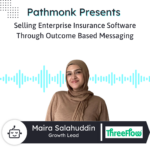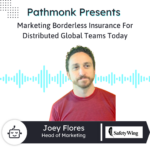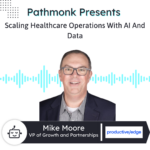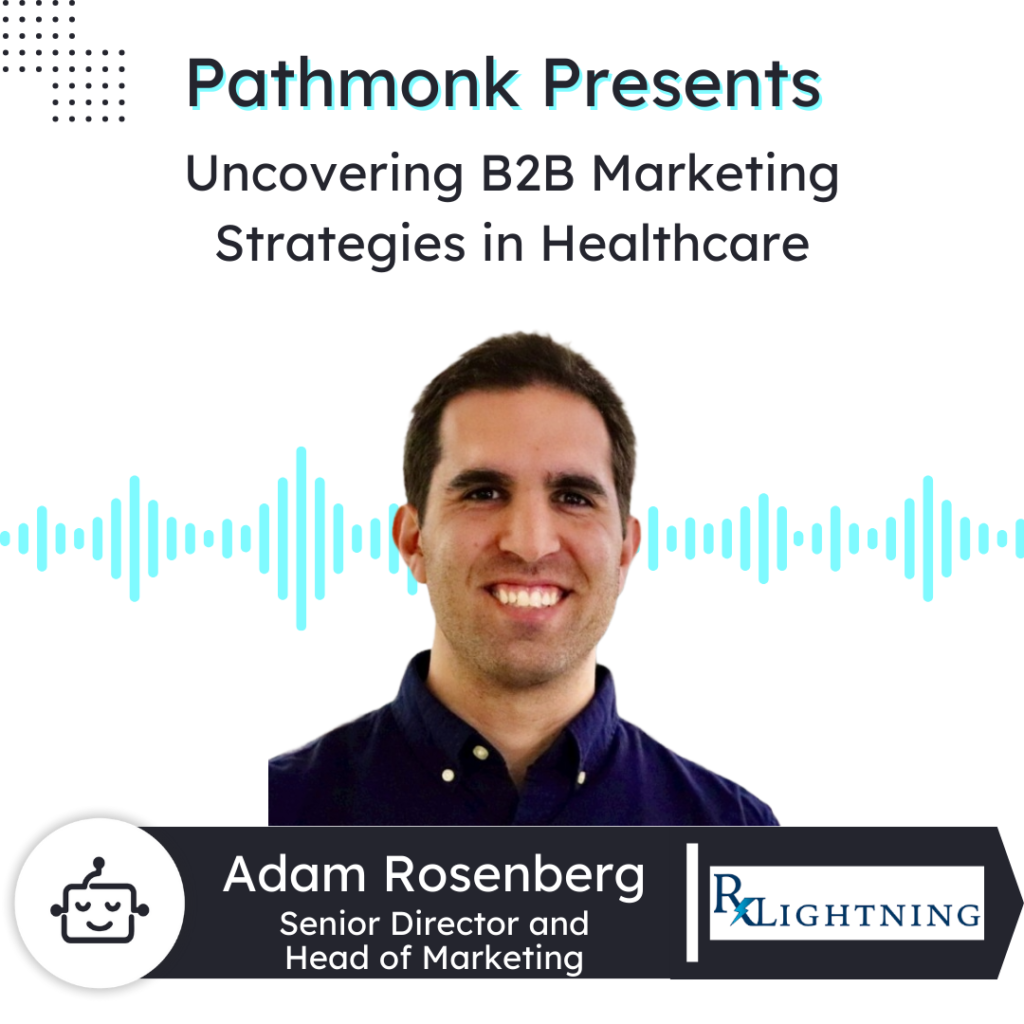
Introduction
In this enlightening episode, we welcome Adam Rosenberg, Senior Director of Marketing at Rx Lightning.
On top of sharing insights into how Rx Lightning is transforming traditional medical processes and presenting their effective digital platform; Adam also delves into effective B2B marketing strategies in the healthcare sector, emphasizing the importance of SEO, content creation, and networking.
This episode offers valuable lessons on combining technology and marketing to solve complex healthcare challenges and improve patient outcomes.
More Sales From Your Website With AI
Personalized interactions based on your users' behaviour to get +50% more conversions.
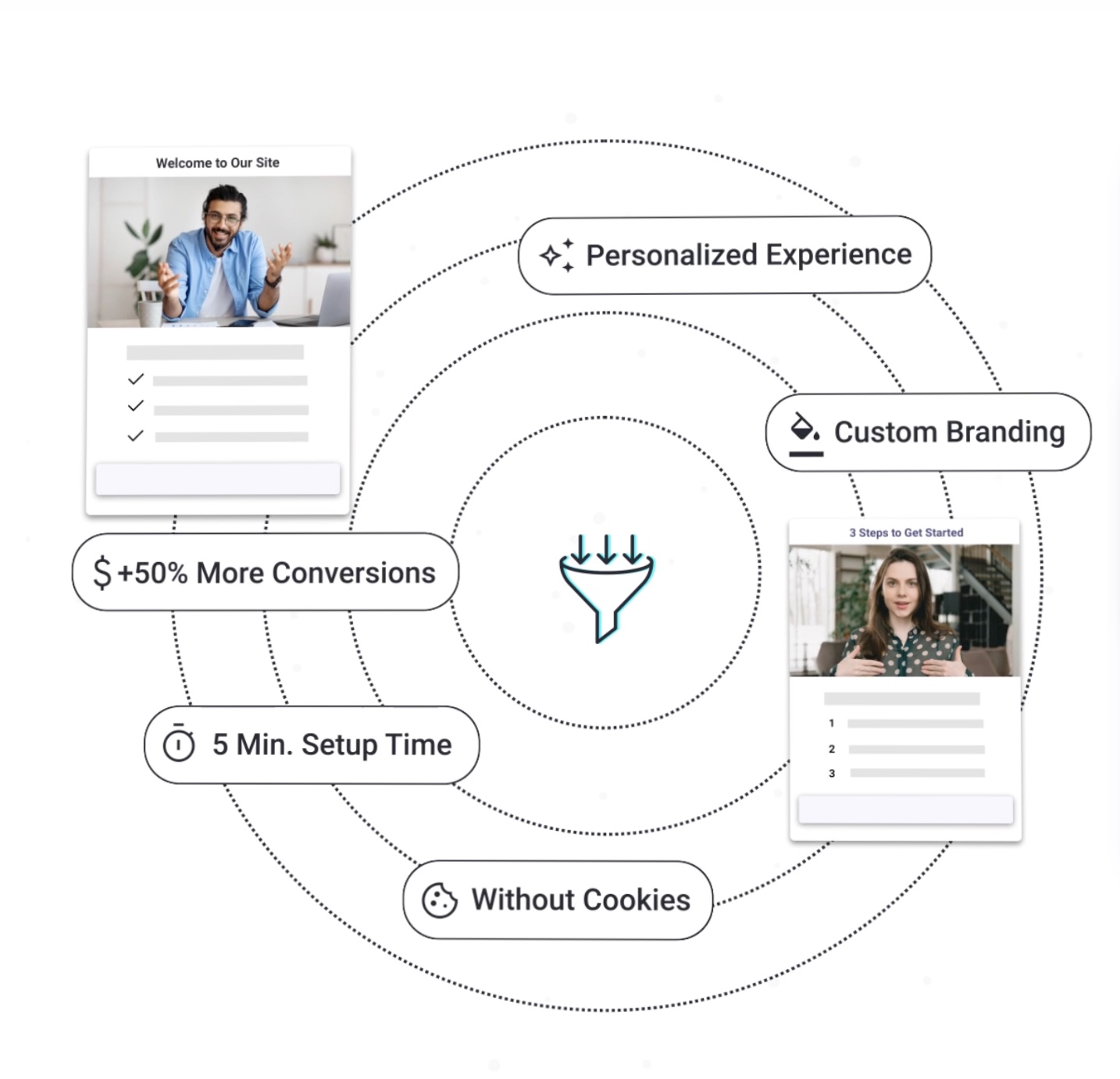
Pablo Marquez: Pathmonk is the intelligence tool for website lead generation. With increasing online competition, over 98% of website visitors don’t convert. The ability to successfully show your value, position, and show support to investors in their buying journey separates you from the competition. Online, Pathmonk qualifies and converts leads on your website by figuring out where they are in the buying journey and influencing them. Decision moments with relevant maker experiences like case studies, intro videos, and much more. So, stay relevant to your visitors and increase conversions by more than 50%. Back to your website in seconds. Let the artificial intelligence do all the work and check us out on pathmonk.com. Welcome to today’s episode of Pathmonk Presents. Let’s talk about today’s guest. We’re being joined by Mister Adam, Rosenberg, senior director of marketing at Rx Lightning. Adam, how are you?
Adam Rosenberg: I’m doing very well. Thanks for having me.
Pablo: The pleasure is ours. Absolutely. So, tell us about your company. In your own words, what is RX Lightning all about?
Adam: Yeah. Well, RX Lightning is a really interesting healthcare technology company. I joined them earlier this year, and what they’re doing is streamlining the specialty medication enrollment process. So right now, when a patient goes to see their doctor, clinician, or is in a hospital and they need a specialty medication, any sort of complex, high-cost, infusion, or more robust medication that you can’t just pick up over the counter, there’s a ton of paperwork. There’s paperwork, faxes going back and forth to people, signatures that are needed, prior authorization from the insurance company, and benefit verification. You never know how much it’s going to cost. There’s this whole long process that delays the patient from getting that medication. So what Rx Lightning is all about is saving time and money and helping patients get on therapy faster by digitizing that whole process. No more phone calls, no more faxes, and then connecting everyone in one platform. So the patients, the providers, the insurance company, if there are foundations that provide affordability support, all of that is combined into one tool so that the patient can get on the medication faster.
Pablo: All right. So, let’s say you mentioned making medication faster for your clients. How do you do this? How do you carry that process forward? What tools or methods do you employ to make that happen?
Adam: Yeah. So we’ve built our own software in-house, and we primarily work with two main entities. Two types of organizations we work with are health systems or providers. So there are large hospitals, but there are also specialty clinics and doctors’ offices who are prescribing medications day in and day out. Those are our end users. They are the ones who are in the tool every day looking up the digital enrollment forms and filling out all the necessary fields, collecting signatures, all of those things within the tool. Now on the other side, there are the manufacturers who we have over 1200 medication forms digitized within our tool. But if a pharmaceutical manufacturer wants a custom experience for a patient to be enrolled in their medication, they can also work with us, and we’ll update their form in a unique way or create a branded experience so that the provider, the patient, and everyone can really have that custom experience that they’d like. Again, to make sure that things aren’t getting stalled throughout the process and the patient can get on that medication faster. We’ve built a portal from the ground up. It’s on the web, but you need to be verified to log in. Then prescribers can go in the tool, look for the forms they need, fill out the appropriate information online, and then submit it. That form gets sent to the pharmaceutical manufacturer, pharmacy, foundation, or wherever it needs to go.
Pablo: I see. What would you say is your top client acquisition channel at the moment? Would it be, let’s say we’re mentioning some of this for inbound or outbound digital marketing?
Adam: It’s a combination of outbound and inbound. So we have a small but mighty sales team who is reaching out via email or going to events and interacting with our key prospects day in and day out. So a lot of our engagement and client conversations come from our sales team. On the other side, we do a lot of website and Google SEO work and marketing-generated work as well. We just actually launched our website a couple of months ago, and we’re already seeing a pretty big increase in inbound leads from our website because we built the website on WordPress. We’ve worked with the Google search console and other Google platforms to make sure that our pages are crawled appropriately, make sure that they’re mobile-ready, and make sure that we’re utilizing keywords that our audiences are looking for. So we’re still really building out the website, but we are seeing leads, people interested, coming through the website. I think the other channel that’s really important, especially in healthcare, is partners and referrals. So if we work with an oncology clinic in one region of the country, there might be other oncology clinics that they know or work with, and they can refer us to those other clinics. So there’s a lot of referral-based, organic growth or people who work at our company who used to work at a health system. There’s a lot of that networking and partnership referral type stuff, and that drives a lot of our growth as well.
Pablo: Right. And what, I mean, you’re saying that a lot of this growth is being driven through the website. But, let’s say, what metrics are you looking to improve on the site at the moment? What is the focus or the main area of improvement?
Adam: Yeah, for us, the website obviously plays a really big role in explaining to the market who we are. But there are a couple of areas that we’re continuing to focus on. Like I said, we just launched the website a couple of months ago. So for us, we are starting to rank for a handful of keywords. We’re in the specialty medication, kind of specialty enrollment space, and we’re starting to see volume come from those searches. But there is a lot of opportunity to hone in on even more targeted keywords and really create content that resonates with our audiences. So we’re starting to launch new products and build out our website a little bit more so that we can have a more robust set of keywords. So, we might be launching products for specific service lines like oncology or dermatology. So we might build landing pages or blog posts or news stories specifically with those keywords. So if someone in the dermatology space or oncology space is looking for a solution, we might rank higher on Google. So we’re playing around with Google Ads. We’re a really small team and still building out our budget. It is something that we’re thinking about just so that we can organically or not organically, but rank higher early on, but we do want to organically rank higher over time.
Pablo: I see. All right, to switch gears a little bit and talk about you as a leader briefly, what are the key tasks that you focus on in your daily work?
Adam: Yeah, so as the head of the marketing department at Rx Lightning, there are three main areas that I think about as a marketing leader. I think about brand as the first one. So what is the messaging that we’re putting into the market, what is on our website, what type of thought leadership are we putting in the market? Our PR and media relations. So anything that has to do with how people envision us, how people see us in the market, that’s top of mind for me. The second key bucket is demand generation and commercial support. I think the website ties into that. But we’re working on a lot of content creation. We’re going to conferences to generate leads, we’re completing RFPs and creating pitch materials. So that’s the second bucket of lead generation, lead follow-up, and commercial support. Then the third is just operational efficiency and growth. So are we hiring the right people? Do we have the right tech stack? How are we measuring our success and developing a plan that can drive success over time? The three buckets, brand, demand generation, and operations, take up all of my time, and those are really where I focus.
Pablo: I see. We’re approaching the end of the interview, and I just wanted to ask you a few rapid-fire questions. So feel free to provide very fast, short responses, if needed. What is the last book you read?
Adam: Well, that’s a really good question. I have a two-year-old, so I’ve been reading hundreds of books that are about ten pages long. One of my son’s favorite books is “Giraffes Can’t Dance.” We read that book about five times last night. It’s about a giraffe who thinks he can’t dance, but when he hears the music of the trees and the breeze, he actually can dance. And everyone is amazed. So it’s a funny answer, but that’s the book I read mostly.
Pablo: Certainly wasn’t expecting that answer, but it sounds like an interesting book.
Adam: Yeah. Yeah.
Pablo: Okay, what is the one single thing that your company is most focused on at the moment aside from overall growth?
Adam: Yeah, I think for us, obviously growth. We just raised our Series A fundraising round earlier this year. We’ve signed on a couple of big clients this year, and for us, it’s really about figuring out how to tweak our products and our solutions to make them as valuable as possible to as many people as possible. In this space, the specialty medication space, there are a lot of challenges, and we could go down any number of paths with solving for the medication enrollment forms, consent collection, or other problems. So we need to figure out the best way to message our solution so that we can have as many conversations as possible and explain its value more effectively.
Pablo: Okay. If there were no boundaries in technology, what would be one thing you would want to have fixed for your role as a marketer today?
Adam: I think without any boundaries, there’s a lot of technology out there that really helps understand who is in the market at what time. But I think there’s a little bit of a limitation on how well it works. There’s a lot of intent data out there. I’ve used different platforms across the last decade, different account-based marketing tools, but I think if we’re living in a future state, I want to know exactly who to target, when the best time to target is, and how. So we have intent data, we know what all these channels are, we can meet them at an event, we can invite them to a webinar, we can send them emails, we can shoot them a white paper, all these different things. We also know there are ten different people in the buying committee. So there’s a lot of complexity. What I want to know is who can I target? Who are the right people to target with the right content at the right time via the right channel? So it’s a really difficult formula to solve, but I think if there were no boundaries, I would just have a dashboard that said, target this person today, target this person tomorrow, target this person the next day.
Pablo: Okay. My next question is going to be a bit linked to that. If there was one repetitive task that you could automate, what would it be? Would it also be like the targeting order or something else?
Adam: I think there’s so much in marketing that’s fun. Designing ads, writing copy, working on a website, building content and stories. A lot of it is storytelling. And actually it might seem repetitive, but building out that story and iterating on that story I think is really important. From a marketing perspective, I like my creative juices to be flowing. So the repetitive thing I might automate would be the reporting. We have various systems that we want to track, whether that’s Google Analytics from our website, Google Search Console for our search results, LinkedIn for follower count and ads, and HubSpot or Salesforce for our lead generation. So I think if we’re able to automate all of that, compile it into one clean presentation or email, and then we don’t need to go to each one of them every month and report out on everything separately, it can all just be automated and cleaned up for you. So I think that would be the one thing I would try to automate.
Pablo: Okay, finally, the last question would be, if there was one piece of advice that you could give yourself if you were to restart your journey as a marketer today, what would it be?
Adam: That’s a really good question. I actually started my career in sales and then quickly transitioned over to marketing, and I think that was a really important thing for me to do because I deeply understand the challenges that sales reps have to face and how pipeline generation and velocity works. So I wouldn’t change anything about that. I think marketers should have experience in sales, but I think one thing is just being more in touch with what’s happening in various industries. I’ve been to a few conferences, read a couple of marketing books, and listened to a couple of podcasts. I think really diving extremely deep into all the different areas of marketing from various industries can really help you be a well-rounded marketer. So you might be a really good writer, but you should probably still know how the website works, or you might be a great content creator, but you should probably know why the design decisions are being made on advertising. And then think about that from an industry perspective. I work in healthcare, but there’s the education industry, oil and gas, technology. There are all these different industries that are thinking about marketing in different ways, and there are a lot of learnings that you can pull from one to another. So I think my advice would be to be open-minded, learn as much as possible, and surround yourself with really smart people.
Pablo: All right, well, thanks a lot for being on the show with us today, Adam. I want to give you the last word. So let’s say that someone forgets everything about the interview today. What is the one thing they should remember about your company? What is the key takeaway that is important for you?
Adam: Yeah, key takeaway about Rx Lightning. Patients need a lot of support in getting on complex medications, and with technology like what Rx Lightning is offering, we can help them get on medications more affordably and faster.
Pablo: Excellent. Well, thank you very much for your time today, Adam. Have a great one.
Adam: Thanks so much. I appreciate it.




